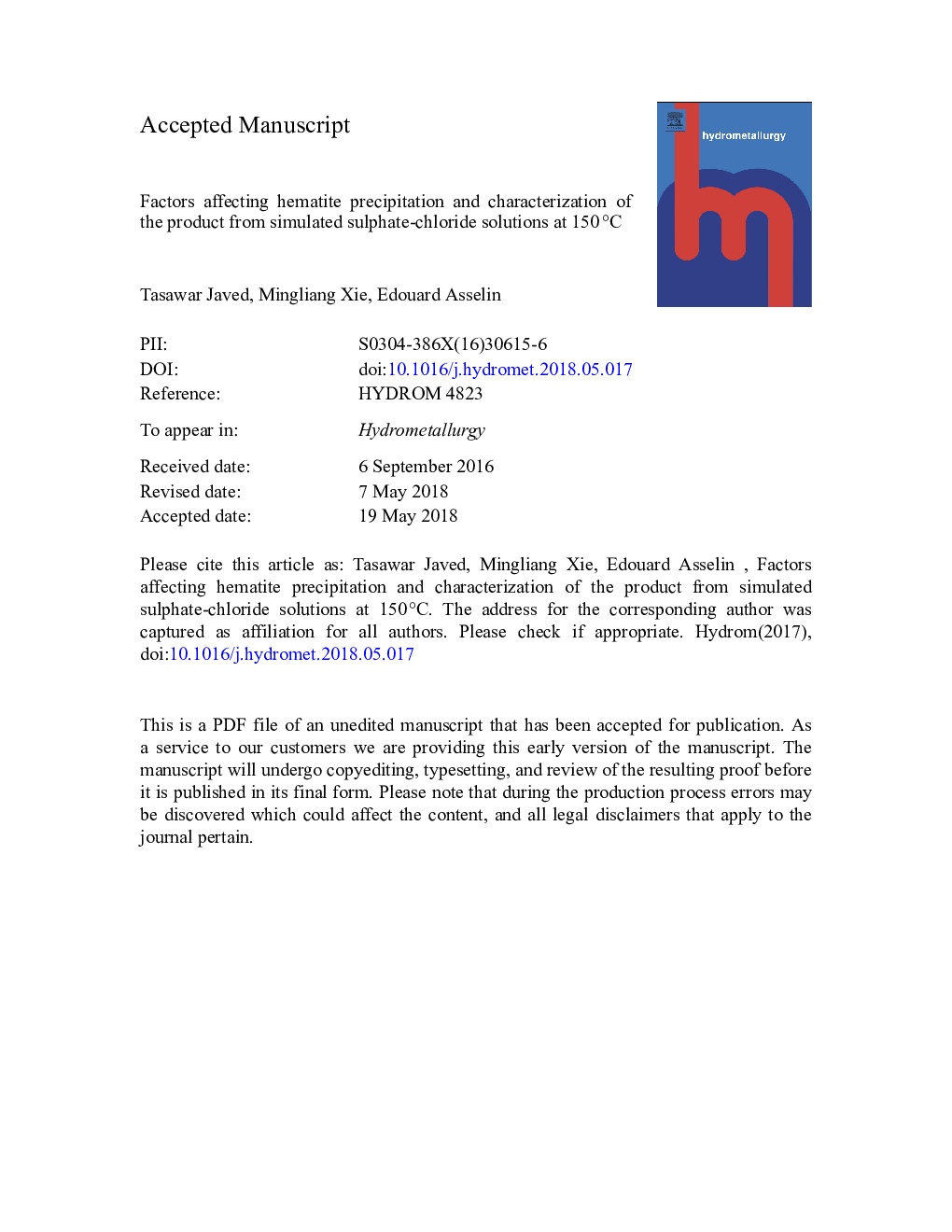| Article ID | Journal | Published Year | Pages | File Type |
|---|---|---|---|---|
| 6658839 | Hydrometallurgy | 2018 | 63 Pages |
Abstract
Precipitation of iron as hematite from acidic sulphate-chloride solutions was studied in a batch reactor at 150â¯Â°C. Several factors that either increase or decrease the extent of hematite precipitation (such as: sulphuric acid, chloride, seed, ferric iron, pre-neutralization, arsenic(V) and copper(II)) were studied. The presence of chloride in the solution increased the extent of hematite precipitation. The presence of low levels of arsenic(V) (<0.5â¯g/L) severely decreased the extent of precipitation. The presence of CuSO4 increased the extent of hematite precipitation. The nature of the product and uptake of elements from solution was affected by the acid levels and the nucleation and growth mechanism. Sulphate adsorption on hematite crystallites and incorporation of the hydroxyl ion into the hematite structure were found to be responsible for the broad and low intensity peaks of the hematite produced from a Fe(III)-Cu(II)-Cl-SO42â system.
Related Topics
Physical Sciences and Engineering
Chemical Engineering
Chemical Engineering (General)
Authors
Tasawar Javed, Mingliang Xie, Edouard Asselin,
